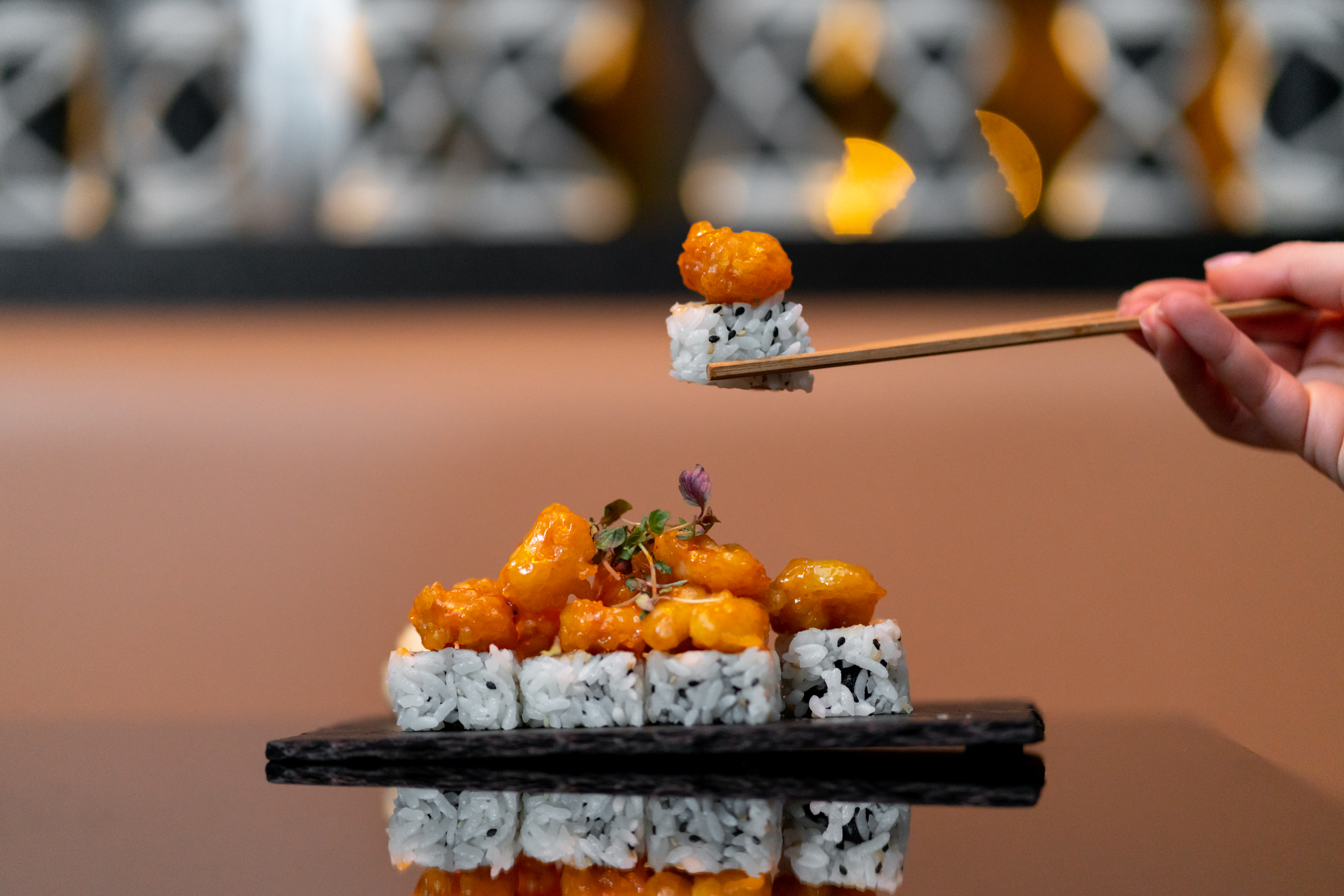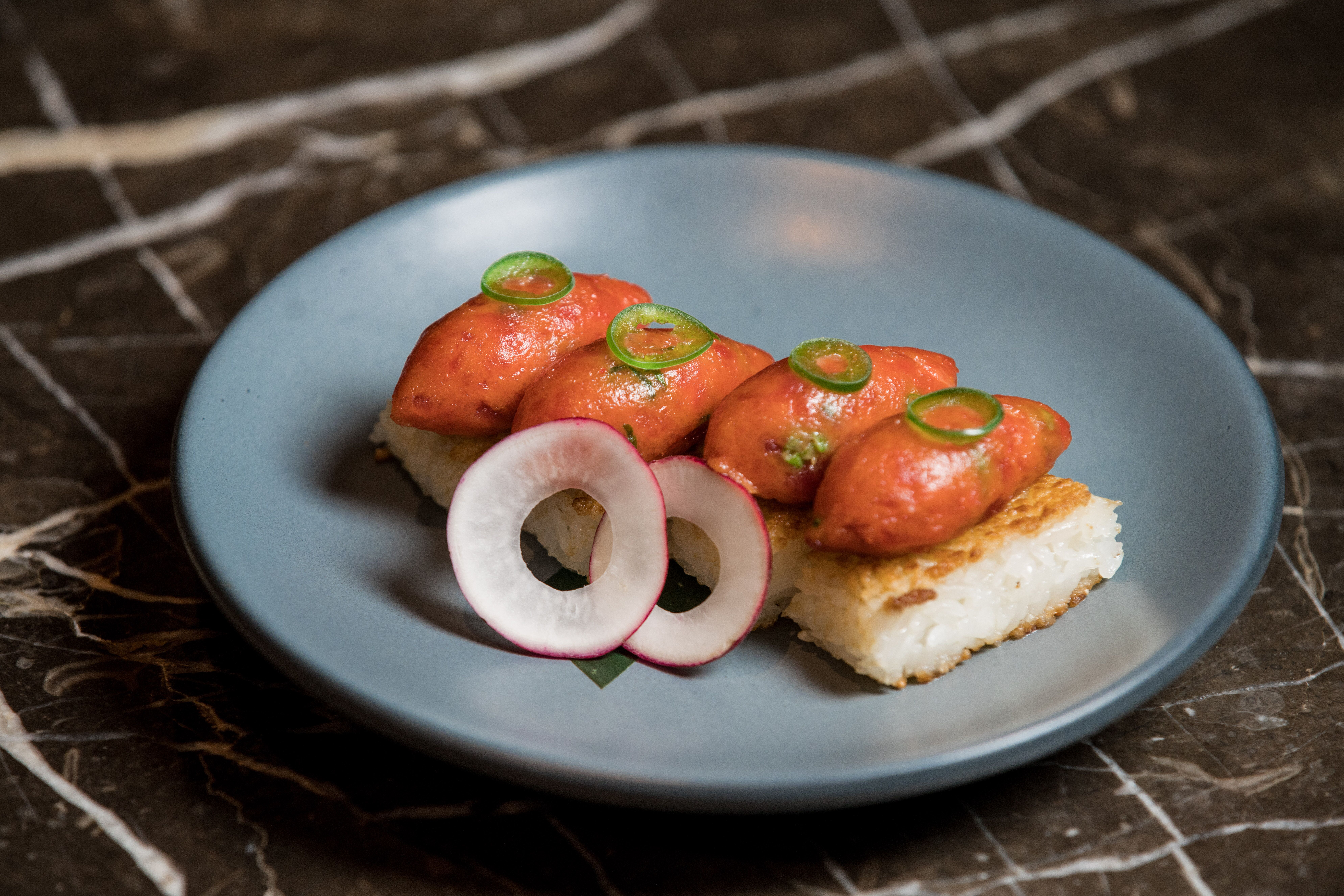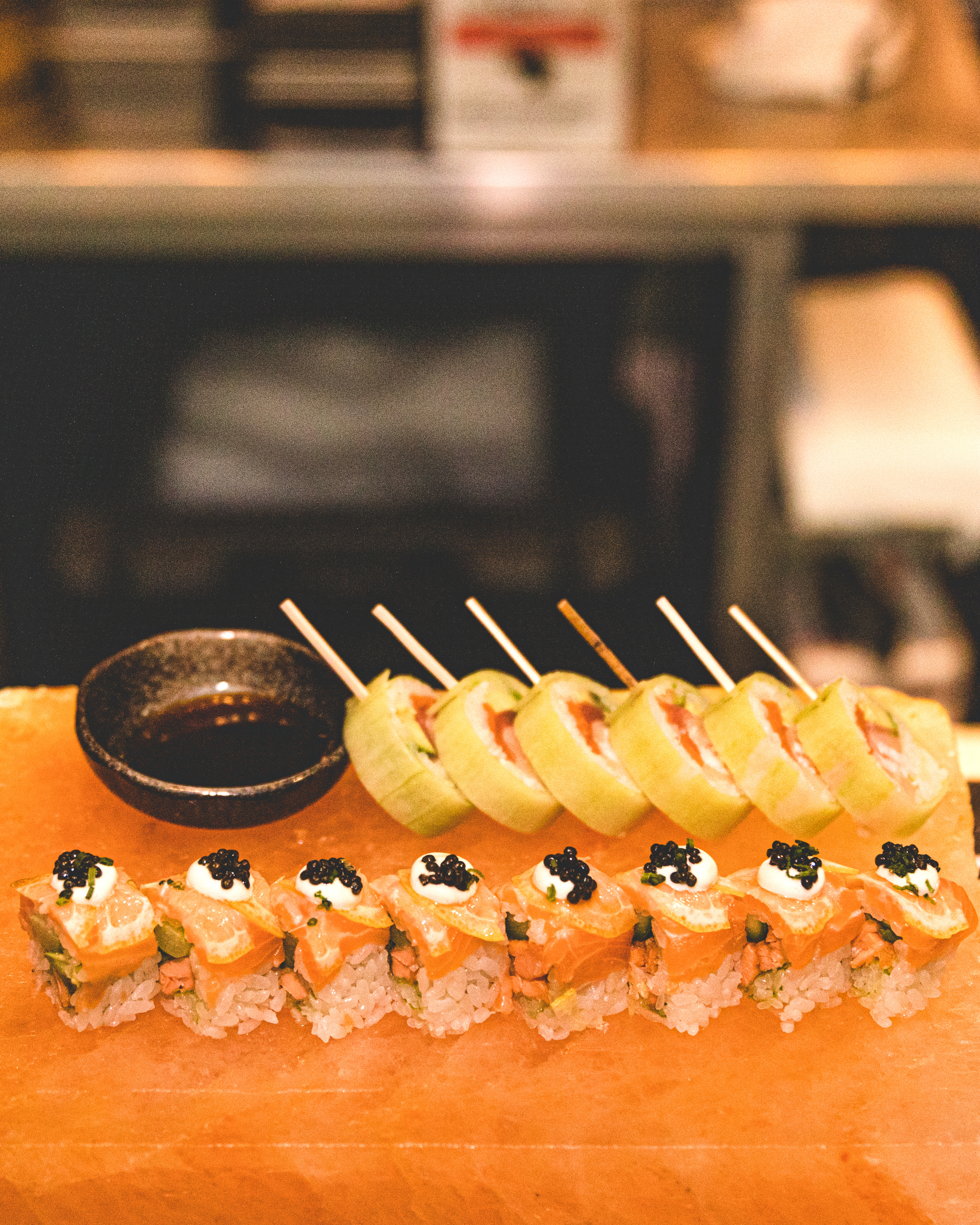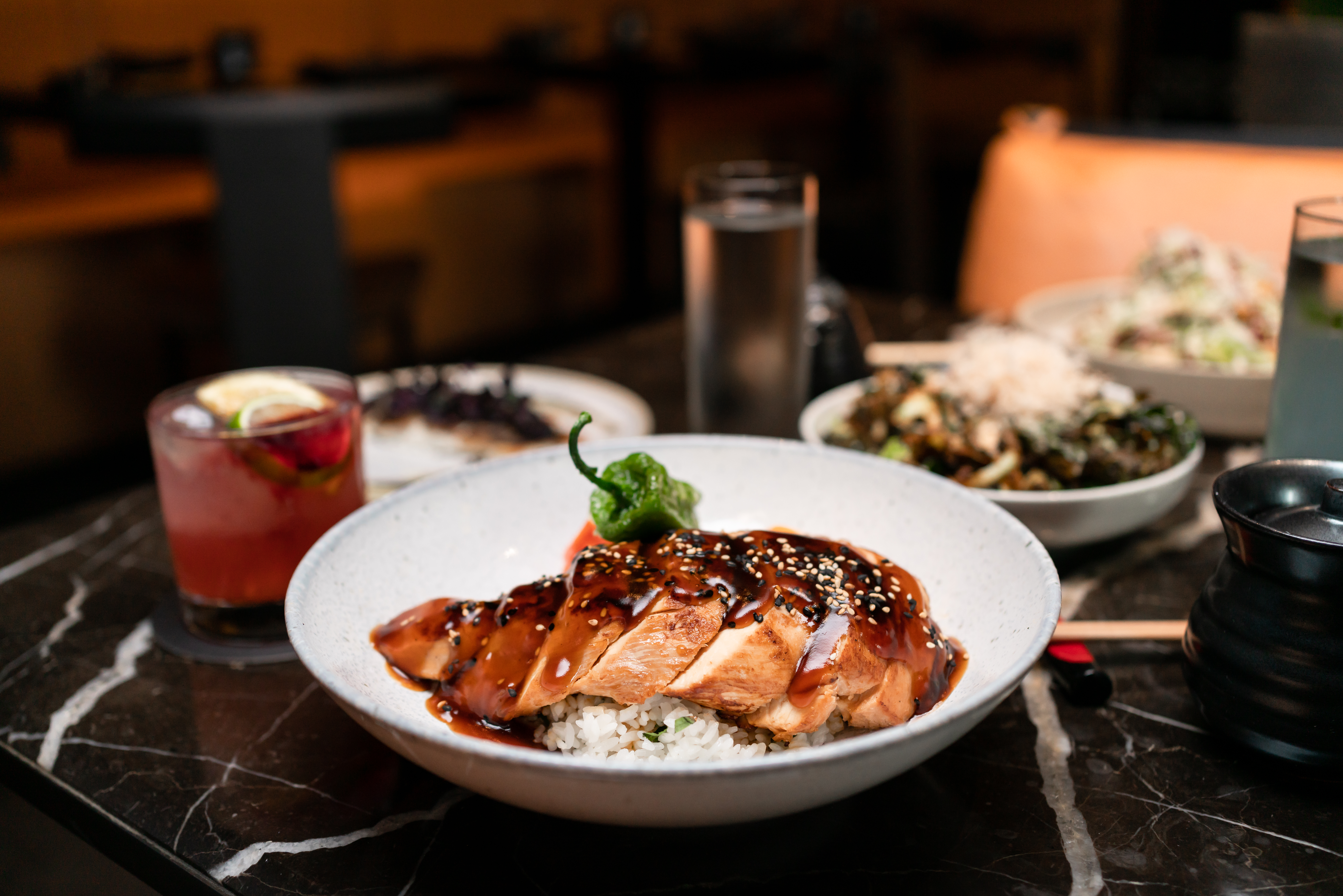
By now you’re probably sick of eating all the store-bought snacks and easy-to-make foods you’ve been living off of since quarantine hit. It’s undoubtedly getting old fast. But time is on your side, friend, which is exactly why you should be using these long days to start mastering the restaurant-level foods that you haven’t been able to enjoy as often in isolation (yes, we want to support independent restaurants as often as possible, but that still leaves us with plenty of nights to cook).
If you didn’t grow up in a household where Japanese food was being prepared, today might be your chance to gather some pointers on this diverse foodway. We offered some tips on ramen from chef Hiro Mitsui earlier in the pandemic; this time around, we’re talking about sushi. Our expert on deck is Rangel Suarez, the Chef de Cuisine at Miami’s Katsuya Brickell (which is currently closed due to coronavirus-mitigation efforts). Suarez has spent 30 years in the business focused on Japanese cooking, including working alongside Benihana founder Kudo Masuzo and Iron Chef competitor Makoto Okuwa — “Doing it the traditional way. No shortcuts — it’s step-by-step.”
We spoke with Suarez over the phone and he offered tips for making great sushi rice, gave us fish sourcing advice, and weighed in on when to put wasabi in your rolls.

What are some of the most common mistakes people make at home when trying to prepare Japanese food?
Well the first one is rice. If you can’t get the rice right, nothing else is going to turn out right. Also, maybe when they start making a sushi and they put too much water on their hands, it’ll soften the rice and it won’t become as sticky. Also, the vinegar that they pour in the rice for mixture — if it’s not enough, the rice won’t be sticky enough. If it’s too much, then it’ll be too vinegary.
Could you walk us through preparing great sushi rice?
There is new crop and old crop. There’s usually a sticker on the bag that’ll identify that. Once you have the rice you want to cook, you’re going to go ahead and clean it. You always want to measure the rice that you’re cleaning because you want to add the same ratio of water to it.
You want to move it around so it’ll peel the outside part of each grain of rice. Keep rubbing it down, throwing out water that’s really cloudy, then you bring in more water and you keep doing the same routine. It’ll take that outside layer of the rice that’s no good to cook. You want to do that about three times, till the water’s kind of clear.
Once you do that, put it in a Hitachi rice cooker. It’ll cook at a high temperature for about 15 minutes to boil and then you’ll leave it for about another 15 to 20 minutes just simmering there. Unless you use an automatic rice cooker, then it’ll do everything on its own.
Once the rice is cooked, you’re going to pull it out and you’re going to put it in a wood squarish bowl called a Hangiri. Hangiri are made out of wood. It has no nails to it. It’s all held with a metal strap. It’s all tied in. The Japanese are really unique about not using nails so nothing gets rusted out. So it’s all wood.
So this hangiri you need to fill with water. New crop rice tends to be drier and will need a little more water. The reason why you fill it with water is, the wood’s going to swell up and seal any cracks that water or any liquid might drain through. Once the wood soaks up all that water, dump out the water, clean the excess water on the inside, and put your steamed rice in there. And then for every three ratios of rice, you’re going to add one ratio of rice vinegar.
Pour the vinegar over the rice, and then you’ll start cutting the rice. So there are no balls of rice left that are not seasoned. Cut all the rice. And any of that excess vinegar that is too much for the rice to absorb, the actual wood will start absorbing it. So it won’t be all mushy type rice. That’s why it’s so important to use the wooden hangiri compared to like a plastic or a metal bowl because it won’t have that, where it’ll kind of suck in that excess seasoning.
Once it’s all cut, you’ll leave it out for, I’d say, about 10 minutes to cool. And then you flip it over, leave it for another 10 minutes to cool, and then you just can put it away and start using it.
What’s the best rice to use?
Well, you want to use short-grain rice. A lot of the short grain rice now that we use for all these Japanese restaurants are mostly coming out of California. But definitely a small grain.

If we want to make pro-level sushi rolls at home, what kind of tools do we need to invest in and how much money are we looking at?
Well, definitely you’ll need a cutting board. You’re going to need a nice sharp knife, a bamboo rolling mat — which is called a makisu — your ingredients, if you want to use any raw fish or any items like that, water to always keep your hands moist so the rice doesn’t stick, seaweed, sesame seeds if you like sesame seeds. You can also use a tofu paper, which is called mamenorisan.
If you don’t like the chewiness of the seaweed or the texture or any of the flavors, you can go with a tofu paper.
Do you have any fresh fish sourcing tips?
Well, usually the best is to go to a fish market that’s out on the water or something where the local fishermen bring in their catch. And you can buy something really nice and fresh there. Or if you know a local spot that you trust and it has a sushi-grade fish, you can go that route as well.
If you want to stay safe, most Asian markets have Saku blocks, which is frozen Saku tuna. You can defrost and use that. It’s not going to be the same quality as a fresh product, but definitely usable.

What are some of the easiest sushi rolls to make at home?
I would have to say rice on the outside, most Japanese restaurants will use the half-cut seaweed, which is a little more difficult to roll. But if you use the whole sheet and not apply rice to the whole thing, it’ll be much easier to roll sushi at home. And you can really put any ingredient in the inside, as long as it’s solid. Nothing, let’s say, ground, so that when you kind of press it and matte it out, it’s not going to squeeze out the ends.
Could you walk us through setting up the ingredients for a roll on the mat?
Let’s go with the California roll. You’re going to use your crab steak. So you’ll grab your crab steak and you want to squeeze the excess water out of it. Usually, it’s imitation crab, which is made from fish, but you can also use king crab.
You can apply the king crab, the rice over on top of your nori (seaweed), you’ll flip it over so the rice is on the outside, the space that has no rice on the end, that’s where you’ll begin to roll. You set it on your makisu, your bamboo mat. You’ll put your crab. You’ll want to cut your cucumbers, I’d say, probably the thickness of a pencil, maybe, the normal measurements in Japan is four fingers.
Four fingers will be the exact length of the seaweed. So everything that you cut for a roll, you measure with four fingers. So you would cut your cucumbers to a four-finger length, your tuna, whatever it is, your avocados. And then lay it out straight out. Push in that seaweed that has no rice, and then use the bamboo mat to help you out, and keep rolling further into the roll.
In the event that it becomes a disaster and you have to throw in the towel and make fish fried rice, how do you repurpose ingredients if it’s just not working out?
Well, a good way to do that is, it’s like a staple traveling food that the Japanese have, it’s called onigiri. It’s very simple. You grab your rice. You kind of make a ball shape out of it. You’re going to press in a type of a hole in the center of that rice. You’re going to put your ingredients in there. And then you’re going to cover it with the rest of the rice.
You shape it into a triangle, grab a piece of seaweed, and you cover that. And that’s what you call onigiri. And it’ll repurpose your ingredients and you can take it out on the road, picnic, anywhere you want.
In your opinion, should we do wasabi on the side, in the soy sauce, or directly on the sushi?
You can always put it inside the roll. That’ll give it a little heat. And then it all depends on if you’re out on a picnic, or you’ve got a table setting. If it’s something that’s out on the run and it’s maybe a road trip or whatever, you can put the wasabi inside the roll and then that way you don’t have to be mixing the wasabi in your soy sauce and maybe just put a little soy sauce over the roll.

What’s an easy home sauce you can make that pairs well with Japanese food that isn’t teriyaki?
A really easy sauce is a ponzu sauce, which is like citrus soy. So it’s, let’s say, one ratio of soy with the same ratio of vinegar. And that would be the Japanese vinegar. Also, you can squeeze some lemons and squeeze some oranges in there. And a nice touch of a little sesame seed oil and you’ve got a great citrus soy. That’s good with sashimi and with your rolls.
What are the key components to making a great teriyaki sauce?
Well, the key components are definitely — and most of all Japanese sauces are — soy, sugar, mirin, and sake.
Ginger isn’t essential?
Well, I mean, depending on what sauce you make. But your base of most of all your Japanese sauces are those four.
What’s an underrated Japanese food that Americans don’t show enough love to?
I would say the pickled vegetables, like pickled daikon, pickled eggplant, pickled cucumbers, those are really nice, refreshing. You can put them in your rolls, give it a nice crunchy texture to it.
Could you set us up with a good pickled sushi roll?
You could probably do something like regular cucumbers. Then you can put the takuan, which is the pickled daikon, the yamagobo, which is a pickled burdock root, the pickled eggplant, which is really nice. And that’s it. Maybe a little bit of umeboshi, which is a plum paste. Give it a nice little tang to it, and that’s a great roll right there.
What’s the average amount of ingredients we should be looking for to put in a roll? How much is the perfect amount and how much is just too much?
For rice, you probably want to use somewhere about a hundred grams of rice. Fish, I would go anywhere from about 40 to 60, depending on how much protein you want in there. Vegetables as well, anywhere probably from 30 to 40 grams.
